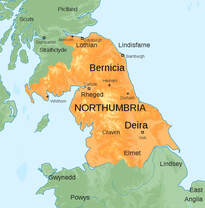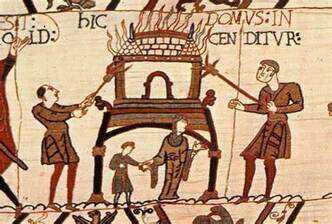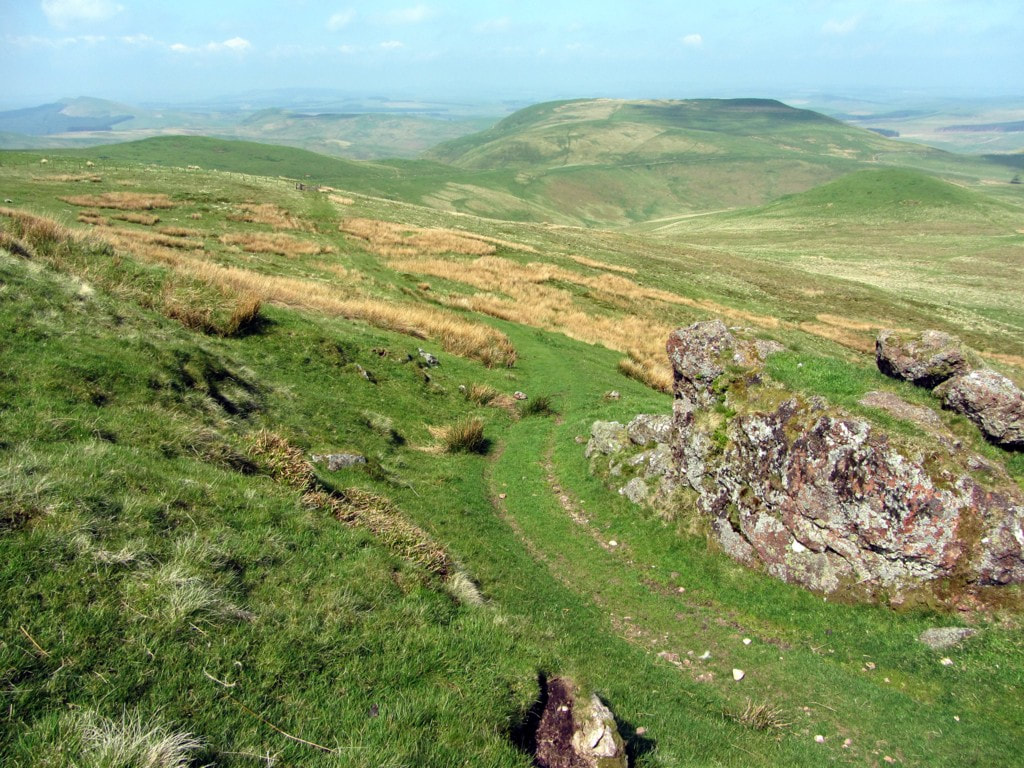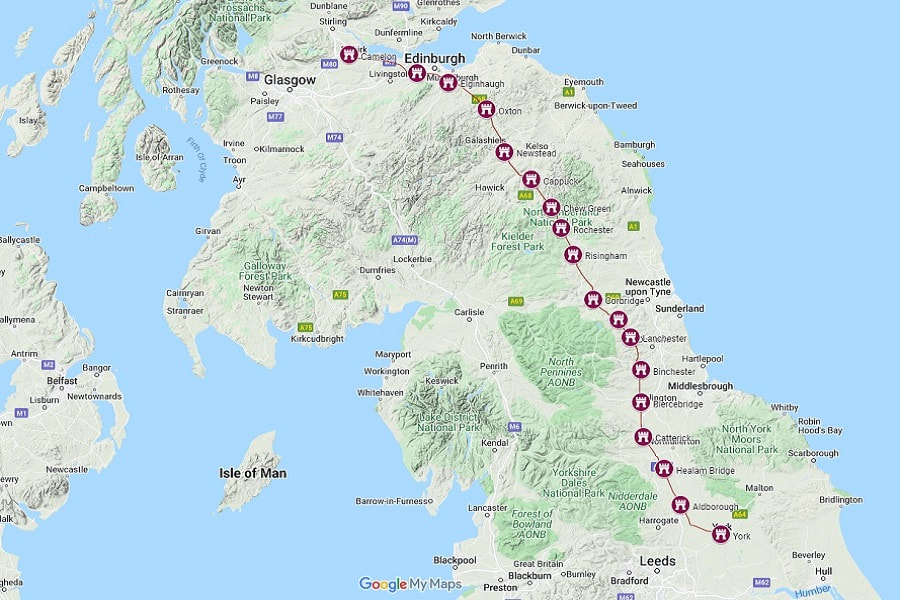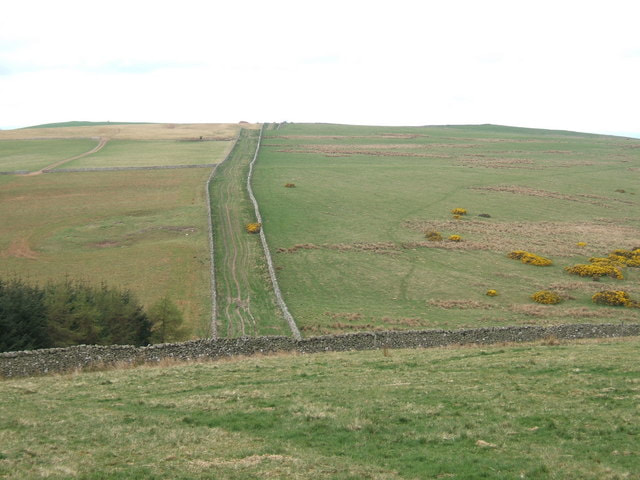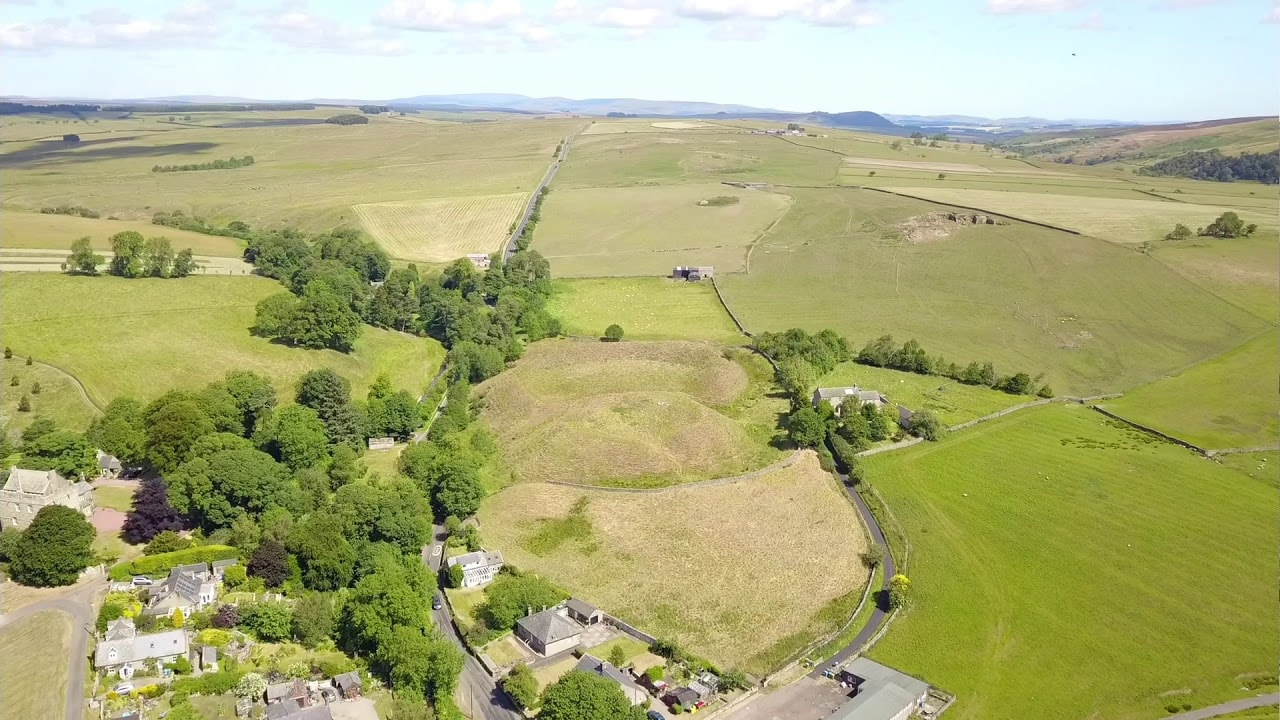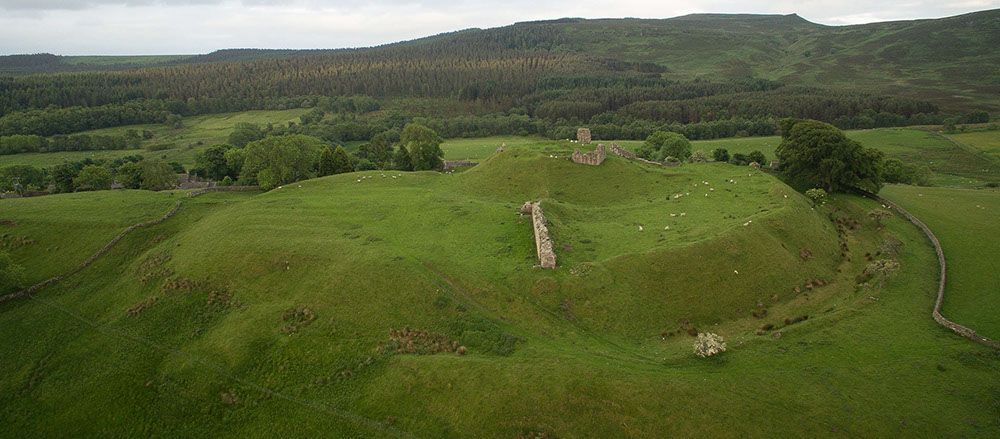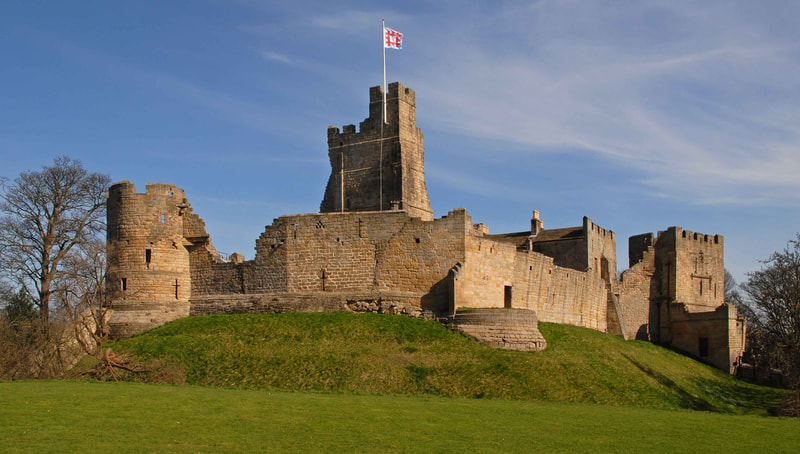The Kingdom of Northumbria extended over a vast area of north-eastern England and as far as the Scottish border, it was formed from the union of two independent kingdoms, Bernicia and Deira. These two kingdoms were first united by King Aethelfyth of Bernicia, who, according to Bede, was the cruellest enemy of the Britains. Aethelfyth died in 616 at the Battle of the River Idle where the ‘Roman road from Lincoln to Doncaster crosses the Idle just east of Bawtry’ By 685, Aldfyth was king. Early writers, including Bede, stated he was a man of ‘great learning’ and was responsible for the creation of beautiful artwork such as is seen in the Lindisfarne Gospels and the Codex Amiatinus. This style of art is considered to be the start of Northumbria’s golden age. Aldyth's reign was relatively peaceful, however, one hundred and fifty years later, Northumbria became the Northern Kingdom of the Danes, and subsequently followed by Norse and English rule. After the English regained territory, Northumbria was reduced to an Earldom stretching from the Humber to the Tweed. It would not be until 1065, that Northumberland was first mentioned (Anglo-Saxon Chronicle) as a separate county.
When the Normans arrived and implemented their ‘scorched earth policy' commonly known as the Harrying of the North, much of Northumbria was laid to waste and depopulated. Chronicler Orderic Vitalis wrote
‘William commanded that all crops and herds, chattels and foods should be burned to ashes, so that the whole of the North be stripped of all means of survival. So terrible a famine fell upon the people, that more than 100,000 young and old starved to death.’ He continued ‘he made no effort to restrain his fury and punished the innocent with the guilty. In his anger, he commanded that all crops, herds and food of any kind be brought together and burned to ashes so that the whole region north of the Humber be deprived of any source of sustenance. My writings have often praised William, but for this act, I can only condemn him’
‘William commanded that all crops and herds, chattels and foods should be burned to ashes, so that the whole of the North be stripped of all means of survival. So terrible a famine fell upon the people, that more than 100,000 young and old starved to death.’ He continued ‘he made no effort to restrain his fury and punished the innocent with the guilty. In his anger, he commanded that all crops, herds and food of any kind be brought together and burned to ashes so that the whole region north of the Humber be deprived of any source of sustenance. My writings have often praised William, but for this act, I can only condemn him’
Two years later, evidence of the depopulation of Northumbria can be found in the Domesday Book where there is no mention of England’s most northern county. The Normans needed to settle these northern borders quickly, and by 1080 the first royal castle was built by Robert Curthose on the mouth of the Tyne. It was Curthose who named this small settlement New Castle, and it was he who gave the Umfrevilles the strategically important land in the Elli Valley where they built Elsdon Castle, a new fortification on the Mote Hills, thus enabling them to establish a firm foothold in English soil. Elsdon Castle was important because it held the Rede Valley and also protected the main trade route into Scotland. By the end of the 12th century, this motte and bailey castle had become quite isolated and left the Umfrevilles open to attack, it was also impractical as a powerbase. Elsdon was far from impregnable but strong enough to make the Scottish think twice. Nevertheless, by 1173 the wooden castle was replaced as the family's main residence by Harbottle Castle, just over three miles from the Scottish Border. Prudhoe Castle which sits on a steep, north-facing hill overlooking the Tyne Valley was also granted to the Umfrevilles. From there the family controlled the river and monitored the route between Newcastle and Carlisle. Despite the fact that they were one of the original border families and held Elsdon, Harbottle, and Prudhoe as their power base their influence was only at a local level and they never achieved notoriety nationally unlike the Percy and Neville families who replaced them as overlords. The Umfrevilles can at least claim they were established in Northumbria two centuries before the Percys, who were originally from Yorkshire, and the Nevilles (in name at least)* who were from Lincolnshire.
The first mention of the Umfrevilles and their connection to the Rede Valley can be found in exchequer returns in the reign of Henry I. For most of their history, they were associated with Redesdale, a remote semi-independent region based in the Rede and Coquet valleys which lay on either side of the Roman road known as Dere Street, which for centuries, was the main road out of Scotland. If the Scots were going to raid England in force, then they were going to come through Redesdale and Coquetdale first. One such raid, in which the Umfrevilles took part was the Battle of Otterburn in 1388.
The Umfrevilles were of Norman origin, and probably hail from one of seven towns in Normandy called Amphreville, but historians are unsure which. No Umfreville appears among the fifteen proven companions of William the Conqueror, however, the ‘first’ Umfreville has been identified as Robert. He is likely to have come to England with the second wave of Norman noblemen where he played his part in the conquest of Northumbria and was rewarded for his efforts with lands in Redesdale* and following William the Conqueror's death in 1087 he may have taken the opportunity to take control of Redesdale and the vital border crossing, or at least attempted to establish a greater authority over the region.
The descent of the early family is complicated and no real connection has been made to the aforementioned Robert therefore it is impossible to build a true family tree, but the naming of 11th and 12th century members (Robert, Odinel and Gilbert) indicates a probable succession from father to son. As far as the Northumbrian branch of the family is concerned it is not until the mid 13th century, when we find Gilbert Umfreville and his wife Matilda, the widow of John Comyn, the Earl of Angus, that the family line becomes clearer. The earliest recorded mention of a member of the Umfreville family is in The Gwentian Chronicle - a history of Wales, where it states that a Gilbert Umfreville was granted the ‘lordship of Pen Marc’ by Robert FitzHamon following the defeat of Rhys ap Tewdwr in Wales in 1093. Gilbert's parentage and links to the Northumbrian branch are not documented, he appears to stand alone, he is however the progenitor of the family known as the Glamorgan Umfrevilles.
It is unlikely that he’s not related and it maybe that he was the youngest of two, maybe three siblings, Robert and Odinel being the older two, if this is the case then it is with this generation that the Umfreville family split into two branches, with Robert or Odinel at the head of the Northumbrian branch.
The early Umfrevilles have been described as warlike -‘ their terrible sword was seldom in its sheath’ writes the Duchess of Cleveland ‘no border barons were more constantly in the saddle, or more eager at the call of the slogan; none so busied in the unceasing turmoil of the Marcher feuds, or so fierce and dauntless in their life-long warfare against the Scots. They had full jurisdiction within their spacious domain and needed to be powerful as well as brave, for they had to hold the castles of Harbottle and Otterburn in addition to their great stronghold of Prudhoe, so gallantly defended against William the Lion in 1170. After many fruitless assaults, the Scottish King had to raise the siege and retreat homewards and was taken prisoner on his march to Alnwick by Odonel de Umfreville and Bernard Baliol. Odonel's grandson, Richard, had the right of " preventing all persons from grazing, hunting, or cutting down timbers in the Forest of Redesdale " granted to him by King John in 1203. Nine years later, the times being threatening and his temper suspected, he had to deliver up his four sons in hostage, and pledge his castle of Prudhoe as security for his loyalty, on the condition that it should be forfeited if he transgressed, and himself dealt with as a traitor. Yet no sooner had the barons taken up arms than Umfreville appeared in their midst. His lands and castles were forthwith granted to Baliol, and though they were restored to him by Henry III, it is clear that he was little trusted, for the King soon after issued a precept to the Sheriff of Northumberland, directing him to empannel a jury of twelve knights to inspect some new buildings at Harbottle, and to demolish all that bore the semblance of fortifications’
It is unlikely that he’s not related and it maybe that he was the youngest of two, maybe three siblings, Robert and Odinel being the older two, if this is the case then it is with this generation that the Umfreville family split into two branches, with Robert or Odinel at the head of the Northumbrian branch.
The early Umfrevilles have been described as warlike -‘ their terrible sword was seldom in its sheath’ writes the Duchess of Cleveland ‘no border barons were more constantly in the saddle, or more eager at the call of the slogan; none so busied in the unceasing turmoil of the Marcher feuds, or so fierce and dauntless in their life-long warfare against the Scots. They had full jurisdiction within their spacious domain and needed to be powerful as well as brave, for they had to hold the castles of Harbottle and Otterburn in addition to their great stronghold of Prudhoe, so gallantly defended against William the Lion in 1170. After many fruitless assaults, the Scottish King had to raise the siege and retreat homewards and was taken prisoner on his march to Alnwick by Odonel de Umfreville and Bernard Baliol. Odonel's grandson, Richard, had the right of " preventing all persons from grazing, hunting, or cutting down timbers in the Forest of Redesdale " granted to him by King John in 1203. Nine years later, the times being threatening and his temper suspected, he had to deliver up his four sons in hostage, and pledge his castle of Prudhoe as security for his loyalty, on the condition that it should be forfeited if he transgressed, and himself dealt with as a traitor. Yet no sooner had the barons taken up arms than Umfreville appeared in their midst. His lands and castles were forthwith granted to Baliol, and though they were restored to him by Henry III, it is clear that he was little trusted, for the King soon after issued a precept to the Sheriff of Northumberland, directing him to empannel a jury of twelve knights to inspect some new buildings at Harbottle, and to demolish all that bore the semblance of fortifications’
The Northumbrian Umfrevilles were still defending the Scottish border as late as the 14th century. Robert Umfreville, seen as a "vision of the ideal knight, brave and wise in war, generous and loyal to his followers, a lover of justice and protector of the common good" was with Henry Percy at Otterburn and sided with Henry Bolingbroke following the murder of Richard II. Robert’s nephew Gilbert Umfreville fought at Harfluer, Agincourt and at the Battle of Bauge where he was killed in 1421.
The cause of the family's decline was not the early deaths/lack of male heirs, ironically it was their success as guardians of the border and their subsequent marriages to Scottish nobility. Unlike the Percys and the Nevilles, they left it too late to make any meaningful family connections with English nobility that might see them being as successful in England as they were in Scotland. The first of the Scottish marriages was to the daughter of the Earl of Angus, later marriages connected them with the Baillols (via the daughter of the one-time king of Scotland) and the Gilchrist/Comyns from whom they received the title of Earls of Angus. A very early English marriage connected the Umfrevilles with the family of Lucy, but it would be over two hundred years before they arrived in England and married into the Kyme, Percy, Grey and Neville families.
The last of the Northumbrian Umfreville was the aforementioned Robert, on whose death in 1436 saw to it that the main line of the Umfrevilles was no more. Robert's estates passed to William Tailboys, a cousin through his grandfather's first marriage.
The cause of the family's decline was not the early deaths/lack of male heirs, ironically it was their success as guardians of the border and their subsequent marriages to Scottish nobility. Unlike the Percys and the Nevilles, they left it too late to make any meaningful family connections with English nobility that might see them being as successful in England as they were in Scotland. The first of the Scottish marriages was to the daughter of the Earl of Angus, later marriages connected them with the Baillols (via the daughter of the one-time king of Scotland) and the Gilchrist/Comyns from whom they received the title of Earls of Angus. A very early English marriage connected the Umfrevilles with the family of Lucy, but it would be over two hundred years before they arrived in England and married into the Kyme, Percy, Grey and Neville families.
The last of the Northumbrian Umfreville was the aforementioned Robert, on whose death in 1436 saw to it that the main line of the Umfrevilles was no more. Robert's estates passed to William Tailboys, a cousin through his grandfather's first marriage.
Of the Umfrevilles castles Elsdon was abandoned in 1160 in favour of Harbottle Castle. Harbottle Castle was taken by the Scots in 1380 and was eventually returned to the family until it passed to the family of Tailboys. Prudhoe, the last of their castles was held by them until the death of Gilbert Umfreville in 1381 when it became the property of Henry Percy, 1st Earl of Northumberland on his marriage to Gilbert’s widow in 1398.
Footnotes*
- The Nevilles bloodline can be traced to Robert FitzMaldred whose family predates the Norman Conquest in Northumbria
- The Testa de Neville - A writ of King John dated 1212 records "Ricardus de Umfraville" holding "baroniam de Prudehoe - villam de Parva Rihull" in Northumberland which had been granted by King Henry I to "antecessores sui", (his ancestors) as well as "vallem de Redesdale’ (Valley of Redesale)
Bibliography
- Dr Sam Newton - Rædwald (died c.625) – Wuffings
- Duchess of Cleveland - Battle Abby Roll with some account of Norman Lineages.
- John Hardyng - Northumbrian Identity and the Scots
